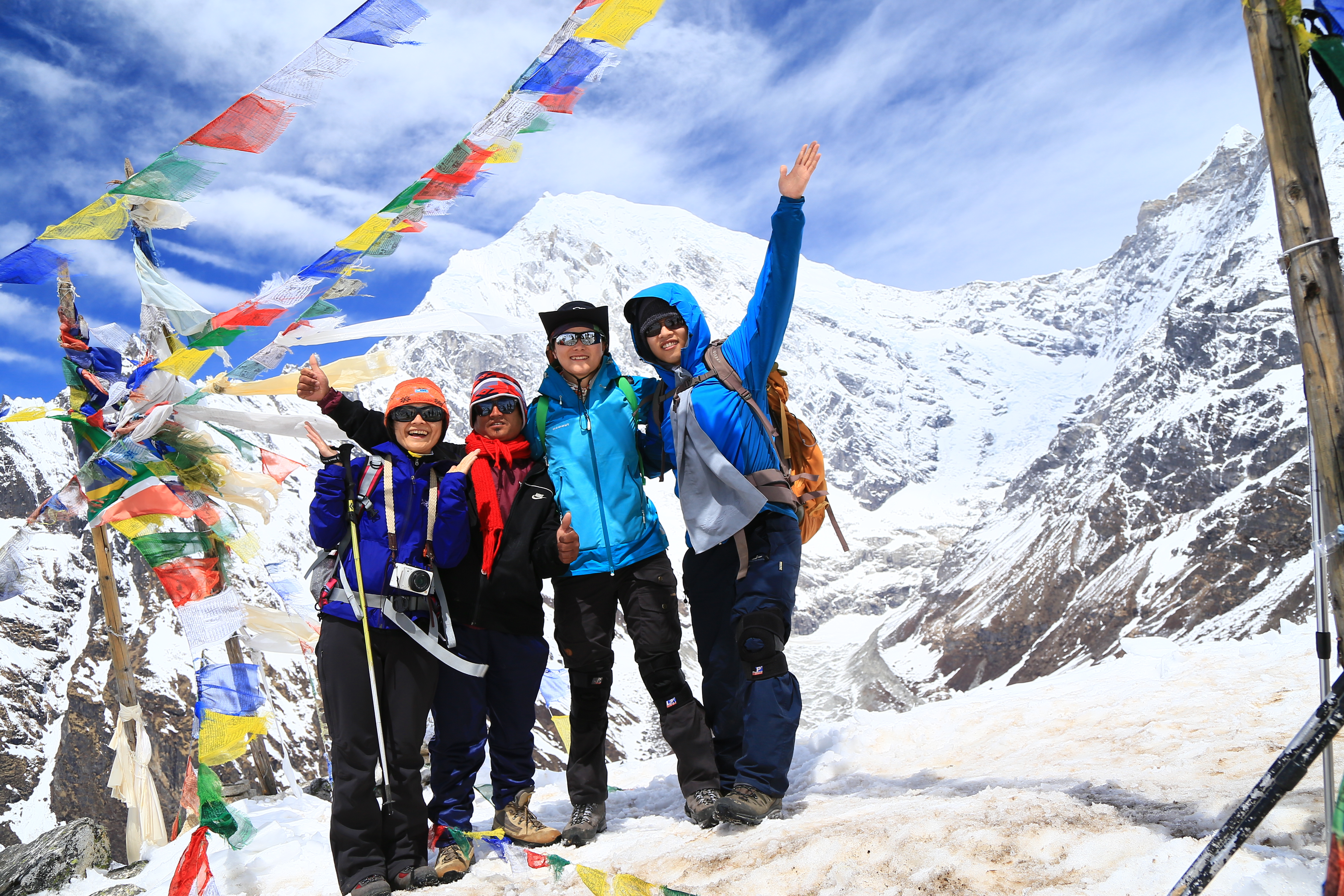Langtang on:
[Wikipedia]
[Google]
[Amazon]



 Langtang Valley () also known as Lamtang Valley is a Himalayan valley in the mountains of north-central
Langtang Valley () also known as Lamtang Valley is a Himalayan valley in the mountains of north-central




 Langtang Valley () also known as Lamtang Valley is a Himalayan valley in the mountains of north-central
Langtang Valley () also known as Lamtang Valley is a Himalayan valley in the mountains of north-central Nepal
Nepal, officially the Federal Democratic Republic of Nepal, is a landlocked country in South Asia. It is mainly situated in the Himalayas, but also includes parts of the Indo-Gangetic Plain. It borders the Tibet Autonomous Region of China Ch ...
, known for its trekking routes and natural environment.
Administrative
The Langtang Valley lies in Rasuwa district of theBagmati Province
Bagmati Province (, ''Bāgmatī pradēśa'') is one of the seven Provinces of Nepal, provinces of Nepal established by the constitution of Nepal. Bagmati is Nepal's second-most populous province and fifth largest province by area. It is bordered ...
in Nepal. Situated about 80 kilometres north of the Kathmandu Valley
The Kathmandu Valley (), also known as the Nepal Valley or Nepa Valley (, Newar language, Nepal Bhasa: 𑐣𑐾𑐥𑐵𑑅 𑐐𑐵𑑅, नेपाः गाः), National Capital Area, is a bowl-shaped valley located in the Himalayas, Hima ...
, the valley lies within the Langtang National Park, which borders the Tibet Autonomous Region
The Tibet Autonomous Region (TAR), often shortened to Tibet in English or Xizang in Pinyin, Hanyu Pinyin, is an Autonomous regions of China, autonomous region of the China, People's Republic of China. It was established in 1965 to replace the ...
in Southwest China
Southwestern China () is a region in the People's Republic of China. It consists of five provincial administrative regions, namely Chongqing, Sichuan, Guizhou, Yunnan, and Xizang.
Geography
Southwestern China is a rugged and mountainous region, ...
. Prior to the 2015 earthquake, 668 individuals were estimated to be living within the valley.
Ecology
The Langtang Valley lies within the Langtang National Park. The park contains a wide variety of climatic zones, from subtropical to alpine. Approximately 25% of the park is forested. Trees include the deciduousoak
An oak is a hardwood tree or shrub in the genus ''Quercus'' of the beech family. They have spirally arranged leaves, often with lobed edges, and a nut called an acorn, borne within a cup. The genus is widely distributed in the Northern Hemisp ...
and maple
''Acer'' is a genus of trees and shrubs commonly known as maples. The genus is placed in the soapberry family Sapindaceae.Stevens, P. F. (2001 onwards). Angiosperm Phylogeny Website. Version 9, June 2008 nd more or less continuously updated si ...
, evergreens like pine
A pine is any conifer tree or shrub in the genus ''Pinus'' () of the family Pinaceae. ''Pinus'' is the sole genus in the subfamily Pinoideae.
''World Flora Online'' accepts 134 species-rank taxa (119 species and 15 nothospecies) of pines as cu ...
, and various types of rhododendron
''Rhododendron'' (; : ''rhododendra'') is a very large genus of about 1,024 species of woody plants in the Ericaceae, heath family (Ericaceae). They can be either evergreen or deciduous. Most species are native to eastern Asia and the Himalayan ...
. Animal life includes the Himalayan black bear, Himalayan tahr
The Himalayan tahr (''Hemitragus jemlahicus'') is a large even-toed ungulate native to the Himalayas in southern Tibet, northern India, western Bhutan and Nepal. It is listed as Near Threatened on the IUCN Red List, as the population is declini ...
, Red monkey, languer Assam macaque, snow leopard
The snow leopard (''Panthera uncia'') is a species of large cat in the genus ''Panthera'' of the family Felidae. The species is native to the mountain ranges of Central and South Asia. It is listed as Vulnerable on the IUCN Red List because ...
, yak, red panda
The red panda (''Ailurus fulgens''), also known as the lesser panda, is a small mammal native to the eastern Himalayas and southwestern China. It has dense reddish-brown fur with a black belly and legs, white-lined ears, a mostly white muzz ...
and more than 250 species of birds.
Culture
Among themselves, the local inhabitants of the Langtang valley refer to each other as 'Langtangpa'. They generally followTibetan Buddhism
Tibetan Buddhism is a form of Buddhism practiced in Tibet, Bhutan and Mongolia. It also has a sizable number of adherents in the areas surrounding the Himalayas, including the Indian regions of Ladakh, Gorkhaland Territorial Administration, D ...
, and speak a Tibetan language that is closely related to the Tibetan spoken in Kyirong, southern Tibet. The Langtangpas regard the mountain Langtang Lirung as their 'yu-lha', their local country god. However, in the state census, the Langtangpas are categorised as Tamang. Langtang valley is believed to be the Beyul Dagam Namgo, one of the many hidden valleys blessed by Guru Padmasambhava.
Economy
The traditional livelihoods of the Langtangpas have centered around agropastoralism. Since the mid-1970s, tourism has grown to become an important source of livelihoods in the Langtang Valley. Swiss cheese-making was introduced in Langtang in the 1950s by Werner Schulthess. Over time, Swiss cheese became a popular product of Langtang, and its production in the valley continues to this day.Access
The nearest motorable roadhead for the Langtang Valley is Syaphrubesi, which is also the base for most treks into the Langtang Valley. The distance of Syaphrubesi fromKathmandu
Kathmandu () is the capital and largest city of Nepal, situated in the central part of the country within the Kathmandu Valley. As per the 2021 Nepal census, it has a population of 845,767 residing in 105,649 households, with approximately 4 mi ...
is 113 km. But due to bad road conditions, it usually takes 6-8 hours to drive from Kathmandu to Syaphrubesi. Just as for the Langtang National Park, entering the Langtang Valley requires everyone except locals to have the TIMS permit and the Langtang National Park entry permit.
Tourism
The Langtang Valley trek, from Syaphrubesi to Kyanjin Gompa and back, is the third most popular trek in Nepal, after the Annapurna Circuit and Everest Base Camp (EBC) treks. Several treks go through the Langtang valley and link it to nearby valleys, like the Helambu valley. In most of these treks, one can stay at local 'tea houses', which are run by locals in nearly every village in the valley, and where one gets basic lodging and food. Around 2000, with the support of theUnited Nations Development Programme
The United Nations Development Programme (UNDP) is a United Nations agency tasked with helping countries eliminate poverty and achieve sustainable economic growth and human development. The UNDP emphasizes on developing local capacity towar ...
, some of these were equipped with solar panels so that hikers could shower with warm water. There are also several mountain-climbing options available in the Langtang valley, ranging from relatively easy-to-climb peaks around 5,000 m high, such as Kyanjin Ri and Tsergo Ri, to technically challenging peaks, such as Dorje Lhakpa and Langtang Lirung.
2015 Nepal earthquake
The village of Langtang was almost completely destroyed (1 building survived) by a massiveavalanche
An avalanche is a rapid flow of snow down a Grade (slope), slope, such as a hill or mountain. Avalanches can be triggered spontaneously, by factors such as increased precipitation or snowpack weakening, or by external means such as humans, othe ...
caused by the April 2015 Nepal earthquake
The April 2015 Nepal earthquake (also known as the Gorkha earthquake) killed 8,962 people and injured 21,952 across the countries of Nepal, India, China and Bangladesh. It occurred at on Saturday 25 April 2015, with a magnitude of Moment magni ...
. The village suffered an estimated 310 deaths, including 176 Langtang residents, 80 foreigners, and 10 army personnel. More than 100 bodies were never recovered. Several other villages in upper Langtang valley were also destroyed. The Langtangpas who survived the destruction of the earthquake were evacuated by helicopter to Kathmandu, where a displaced persons camp was temporarily set up at the Yellow Gumba near Swayanmbhu. Many Langtangpas returned to the valley in the following months, and a significant amount of reconstruction was completed within the first year after the earthquake. By early 2018, the centuries-old gompa at Kyanjin Gompa, which had also been destroyed in the earthquake, had been rebuilt. The Swiss-cheese factory at Kyanjin Gompa village was destroyed too, but has been rebuilt and since then become operational again.
Climate change
Since the mid-2010s, Langtangpas have noticed that most natural springs in the valley have gone dry. Scientists have attributed the reduction in the glacier area of the Langtang glacier directly to anthropogenic climate change since the 1970s. The intergovernmental organisation ICIMOD conducts periodic cryospheric research in the Langtang valley and Yala Glacier.Langtang Himal
Langtang Himal is a mountain range in the Himalayas which includes the following peaks:
See also
* Langtang National Park * The earthquake of April 25, 2015 in Nepal *Path of the Mani
The Path of the Mani is an ancient high-road from Kathmandu, Nepal, to the mountain pass
A mountain pass is a navigable route through a mountain range or over a ridge. Since mountain ranges can present formidable barriers to travel, passes ha ...
References
{{coord, 28.250, N, 85.500, E, display=title, source:dewiki Bagmati Province Mountain ranges of Nepal